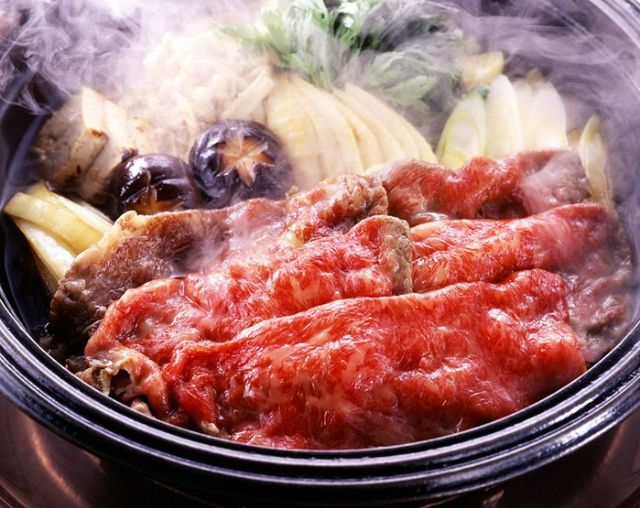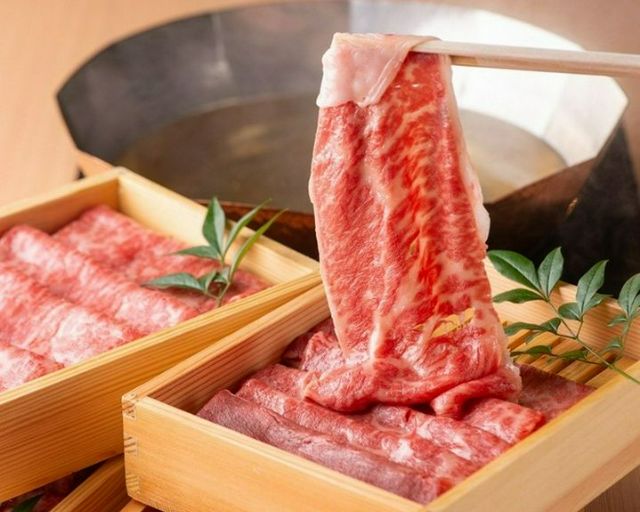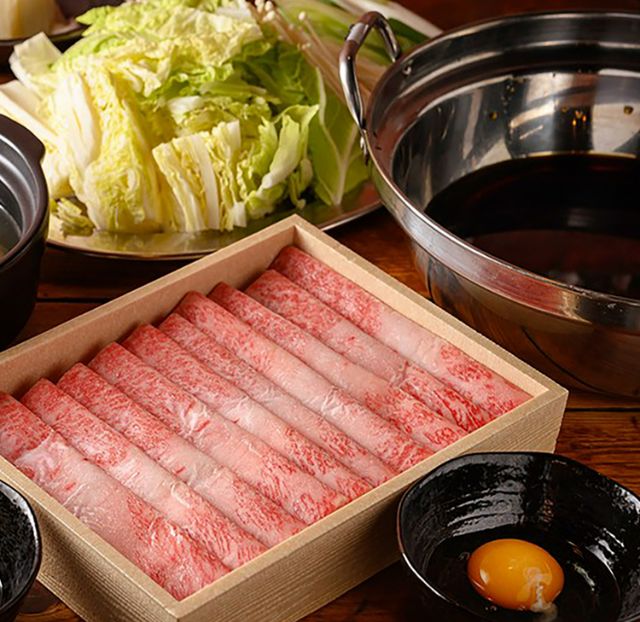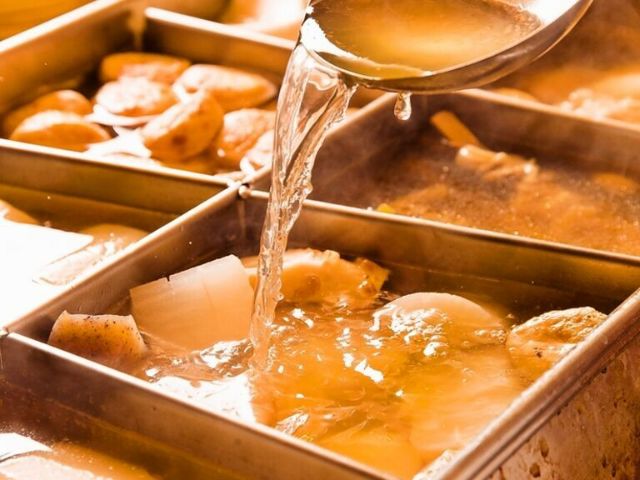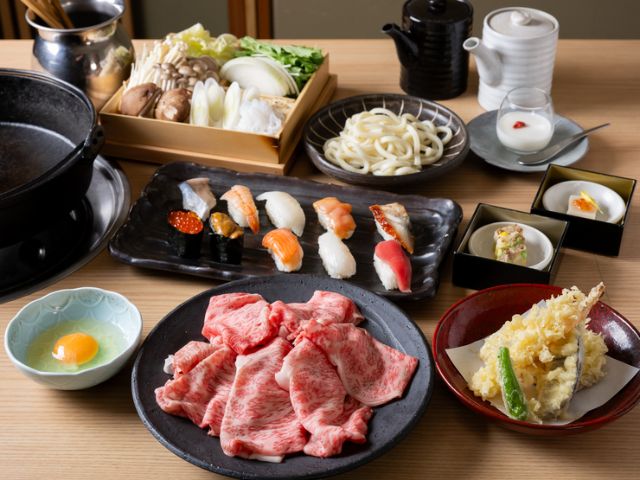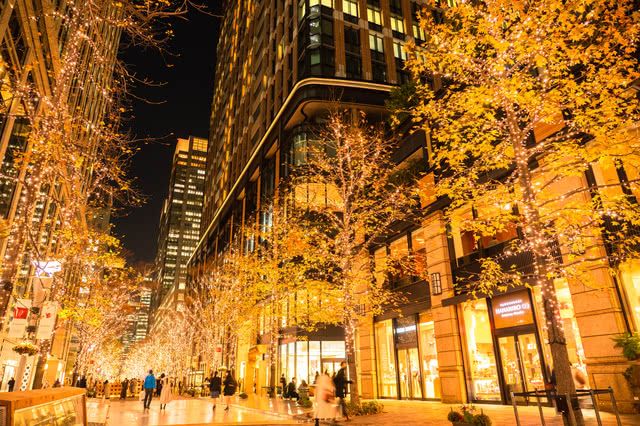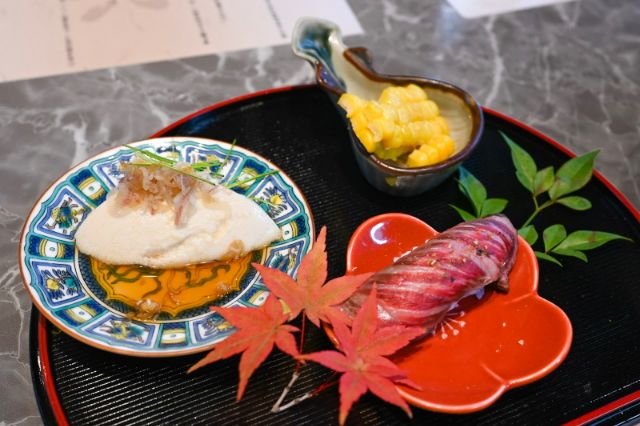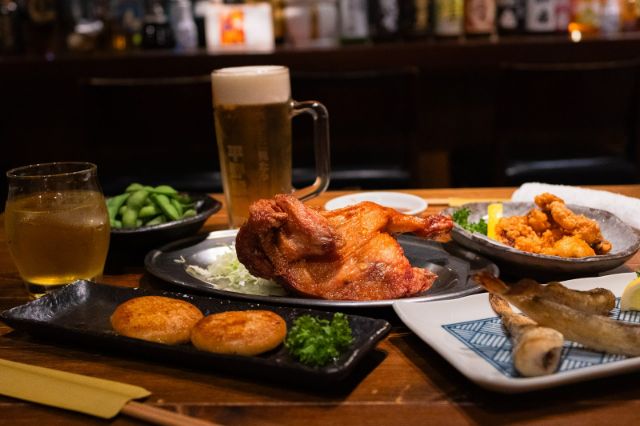A Must-Try Winter Dish! Introducing Japanese Nabe Hotpot Cuisine
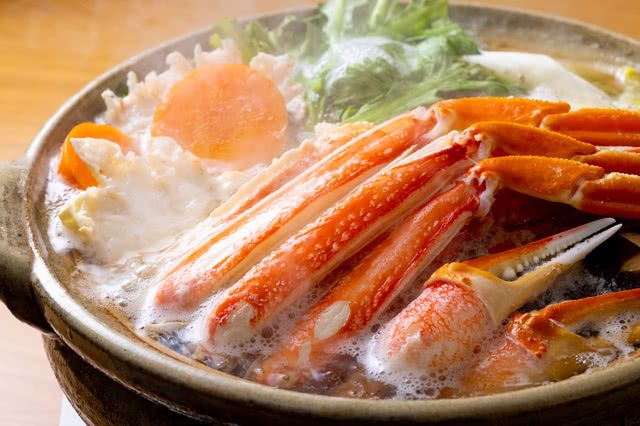
What Is Nabe?
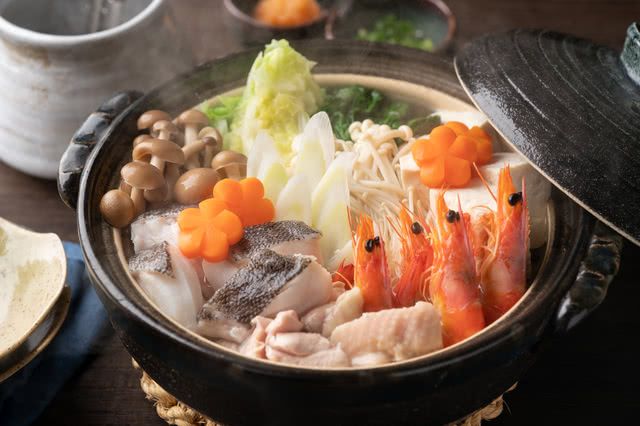
The defining characteristic of Japanese nabe is that it is served to eat in the same pot that it’s cooked in. Usually, the nabe pot is placed on the table over a portable gas stove or other heat source, around which family and friends gather to eat and share. Once the broth and ingredients are cooked, each member will serve themselves in individual bowls, often dipping their chosen ingredients in ponzu (soy sauce with citrus juice), sesame sauce, or another sauce or condiment for extra flavor.
Common nabe ingredients include meat such as beef, pork, and chicken, along with seafood like cod, salmon, shrimp, oysters, and crab. Nabe are also often filled with vegetables like Chinese cabbage and spring onion, which, while available throughout the year, are considered winter vegetables best eaten from November to around February.
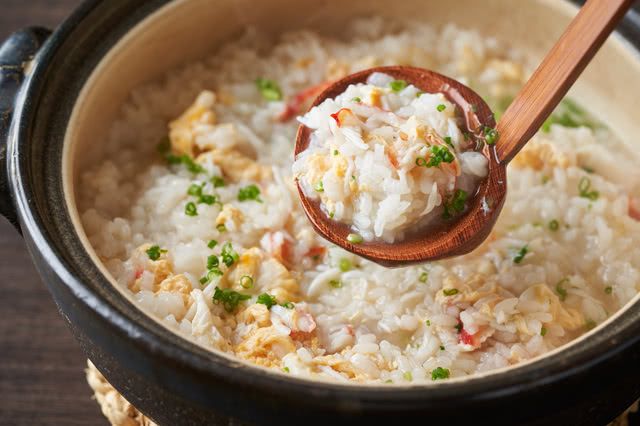
The taste of the nabe varies greatly depending on the broth. If you pass by a supermarket while sightseeing in Japan in the winter, be sure to check out their section on nabe broths. You'll be amazed at the variety available, which spans from simple soy sauce-based broths to soy milk, miso, tonkotsu ramen-like soups, and even tomato ones that pair well with cheese.
The best way to enjoy nabe broth to the last drop is with shime, which is the act of adding rice to the leftover broth to make a sort of rice porridge or noodles for noodle soup. Infused with the flavors of the ingredients cooked in it, savoring the leftovers as shime is an eagerly awaited final treat!
Winter Nabe Hotpots Are the Great Way to Experience Japanese Culture!
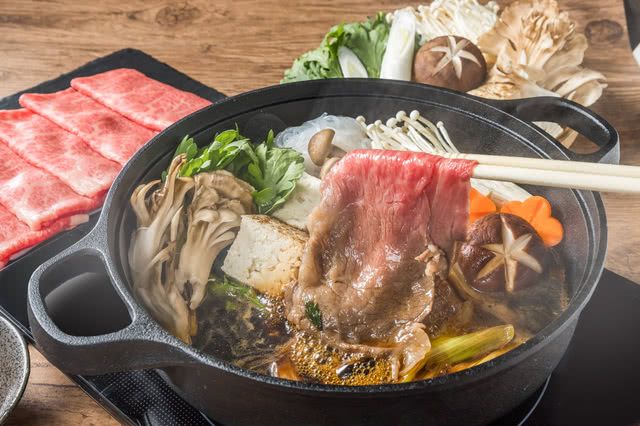
Aside from taste, the real pleasure of nabe is being able to sit around the nabe pot with family and friends and enjoy their company while waiting for the food to cook. Nabe is an integral part of Japan's food culture that is deeply rooted in the daily lives of Japanese people and is a must-try when visiting Japan. There are many kinds of nabe dishes to explore, including the classic shabu-shabu, sukiyaki, and kani-suki.
Shabu-shabu and sukiyaki are available at many specialty restaurants all over Japan. It’s quite easy to find places serving them in popular sightseeing spots.
Shabu-shabu consists of a broth made from kelp and other ingredients brought to a boil, into which thinly sliced beef is dipped and swished around to cook. Once done, the beef is dabbed in sauce before eating, while the vegetables are left to simmer in the broth until fully cooked.
Sukiyaki contains thinly sliced beef, spring onions, tofu, vegetables, and other ingredients simmered in a special sukiyaki broth made of soy sauce, sugar, mirin and sake. Sukiyaki is cooked differently in the Kanto and Kansai regions, with Kansai locals grilling the meat first before adding it to the broth. You can also dip the cooked ingredients in beaten eggs for added flavor.
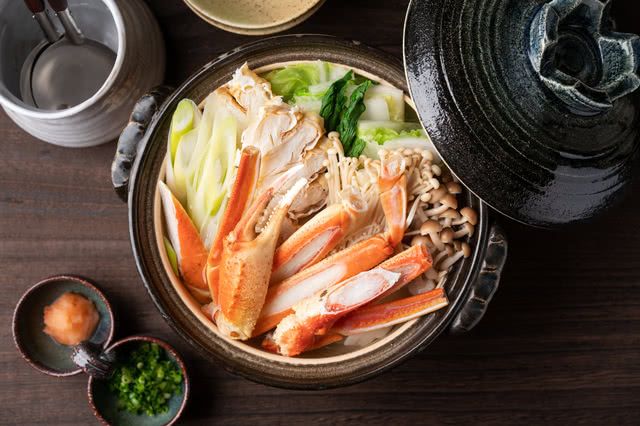
■Recommended Restaurants
Shabuzen Ginza Creston Hotel Branch (Tsukiji)
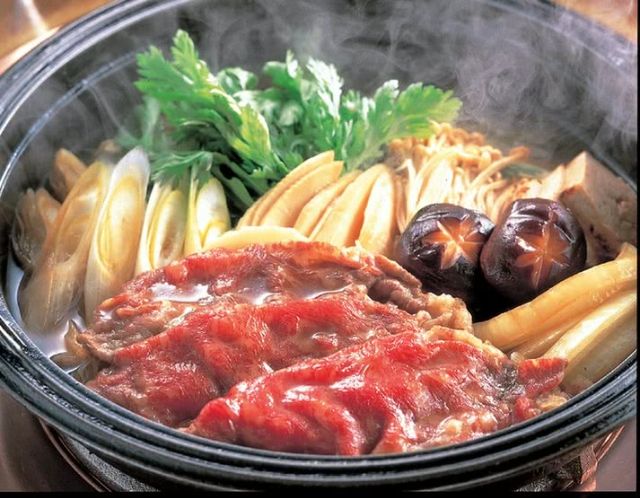
Shabuzen Ginza Creston Hotel Branch is a restaurant specializing in shabu-shabu and sukiyaki. Here, everything is meticulously curated by the seasoned chefs, from prime meat specially selected for shabu-shabu to the final presentation of the nabe.
The [Japanese Kuroge Wagyu Rib-Eye Steak Dish and Seasonal Cuisine] (9,735 JPY) course comes with an appetizer, sashimi, seasonal dish, and dessert. You’ll be served 120g of beef from Japanese Kuroge Wagyu with assorted Japanese vegetables, available in both shabu-shabu and sukiyaki styles. Shabu-shabu comes with kishimen (a type of udon, which is a flat noodle about 1 mm thick and 7-8 mm wide), while white rice is served for sukiyaki.
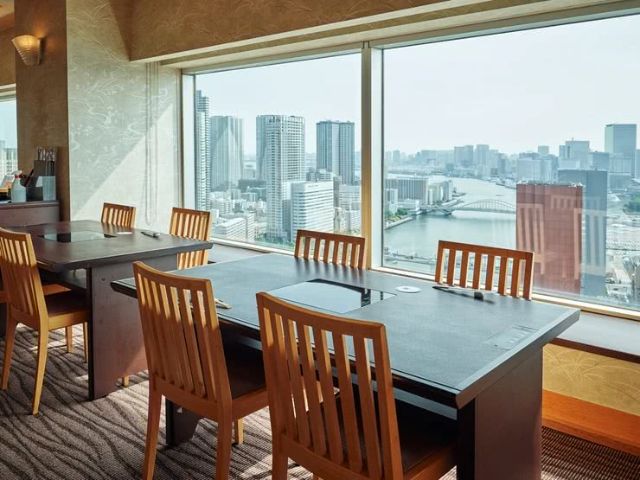
Sitting 120 meters above ground, diners will also be treated to stunning views of the Tokyo cityscape at night. All the tables are large, and the spacious interior ensures that even big groups can sit comfortably.
Shabuzen Ginza Creston Hotel Branch
Closed: None
Average price: [Dinner] 7,000 JPY
Access: From Exit 3 or 4 of Tsukiji Station, go straight down the street to the right of Denny's. The small tower to the right of St. Luke's Towers. It's on the 32nd floor of the Ginza Creston Hotel
Address: 32F, St. Luke's Garden Ginza Creston Hotel, 8 Akashi-cho, Chuo-ku, Tokyo Map
More Details Reservation
Kaiseki Mita Basara Bettei (Roppongi)
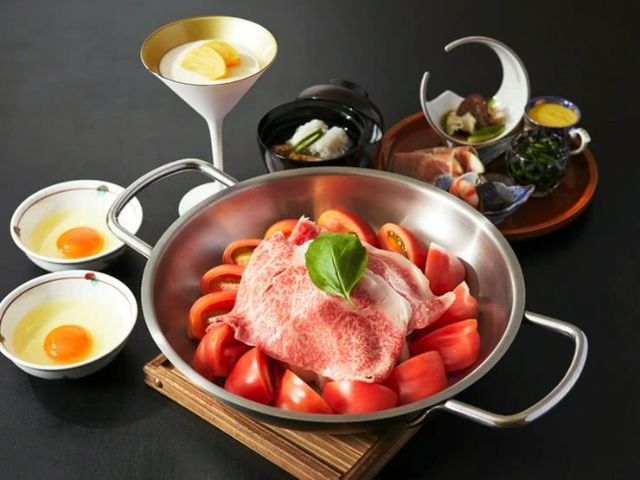
Kaiseki Mita Basara Bettei is the sister restaurant of Mita Basara, a Japanese restaurant that has been awarded one star for three consecutive years by the Michelin Guide. Along with its signature Tomato Sukiyaki, there are several additions that are unique to this restaurant, such as the Earthenware Pot-Cooked Rice.
[The Kobe Beef Tomato, Sukiyaki Rib Eye, and Sirloin Sampling Course] (19,800 JPY) comes with two types of Kobe beef, ribeye and sirloin, cooked in tomato sukiyaki. Unlike regular sukiyaki, tomato sukiyaki includes onions, basil, and other hearty ingredients. While a seemingly strange combination, anyone who tries it will agree that the acidity of tomatoes is a heavenly match for the rich flavor of Kobe beef!
Being an authentic high-end kaiseki course meal, diners will enjoy a hefty assortment of seasonal seafood and Japanese black beef through a range of dishes, including sashimi, soup, grilled foods, and more.
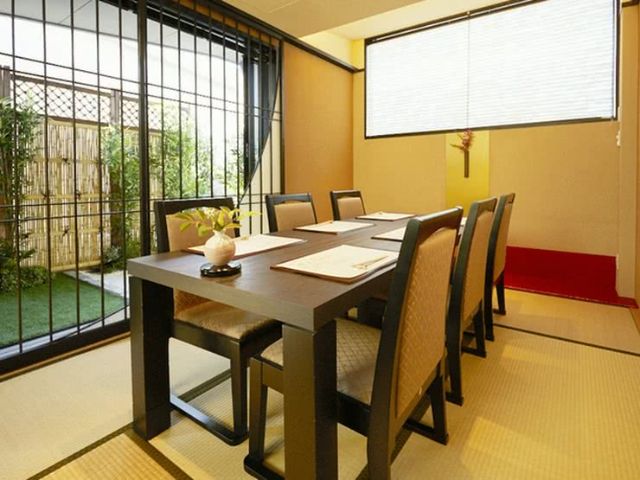
Seating stretches from the 1st to the 3rd floor, with tables and chairs on Japanese-style tatami matting on the 3rd floor. The 3rd floor courtyard also features a projection mapping display of swimming carp, enhancing the Japanese atmosphere.
Kaiseki Mita Basara Bettei
Closed: Irregular
Average price: [Dinner] 20,000 JPY
Access: 187m from Roppongi Station
Address: 7-17-2, Roppongi, Minato-ku, Tokyo Map
More Details Reservation
Kanimatsuba Main Branch (Tottori)
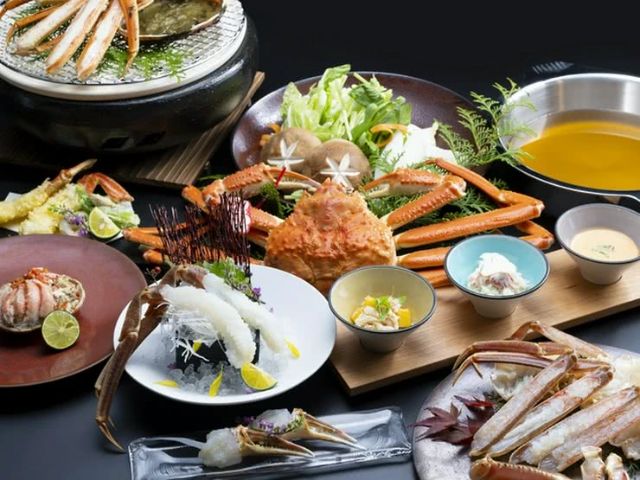
Matsuba crab is the name given to mature male snow crabs caught in the Sea of Japan during winter when the waves are high, which is from early November to March. Packed with meat and a refined flavor, these crabs are one of the most coveted wintertime delicacies in Japan!
Kanimatsuba Main Branch is a restaurant specializing in Matsuba crab, boasting a superb location just a 35-minute drive away from the local fishing port, ensuring their Matsuba crabs are served freshly caught.
The [Matsuba Crab Full Course 800g] (38,000 JPY in November, 48,000 JPY in December, and 38,000 JPY in December) treats diners to two whole crabs: one 800g tagged Matsuba crab from Tottori and one Matsuba crab caught fresh and boiled at the fishing port. The kani-suki nabe is the chef’s pride, and it comes with a shime of exquisite rice porridge! Those who opt for this course will be able to relish the deep, sweet flavor and springy texture of Matsuba crab to their hearts' content!
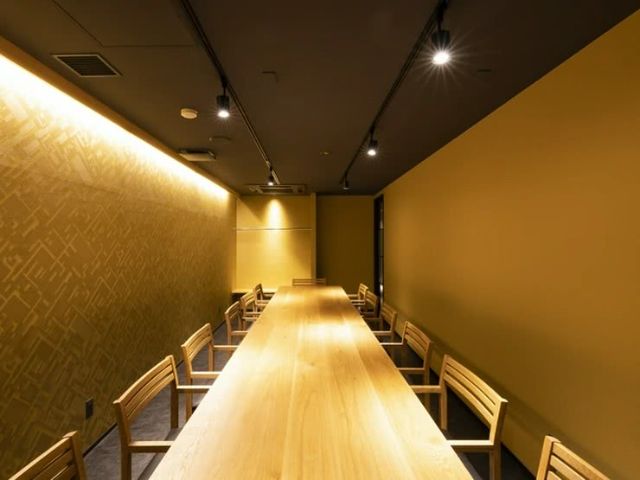
There is also a wide array of alcoholic beverages available handpicked by the chef from all over Japan, including local Japanese sake from Tottori. Be sure to have the fresh winter Matsuba crab caught in Tottori with a pairing of local Japanese sake, both blessings of the bountiful Tottori climate.
Kanimatsuba Main Branch
Closed: None
Average price: [Dinner] 30,000 JPY / [Lunch] 10,000 JPY
Access: 8 minutes walk from JR Tottori Station North Exit. Proceed north on National Highway 53 (Wakasa Kaido). The Palette Tottori Hall serves as a landmark
Address: 2F, Yayoi Bldg., 302-1, Yayoicho, Tottori-shi, Tottori Map
More Details Reservation
Disclaimer: All information is accurate at time of publication.
Thank you for reading our article.
Our goal is to take your culinary journey to the next level by helping you find the best restaurant. With SAVOR JAPAN, you can search and make reservations for
the Nabe and Sukiyaki restaurants found in and around Tsukiji and Tottori that fill your needs.
Discover more Nabe and Sukiyaki restaurants by area
- Tokyo Area
- Near Tokyo
- Kyoto and Osaka Area
- Hokkaido Area
- Northern Honshu (Tohoku)
- Central Honshu (Chubu)
- Western Honshu (Chugoku)
- Shikoku
- Kyushu
- Okinawa and Ryukyu Islands
Discover more restaurants to eat Japanese Cuisine and Japanese Cuisine by area
Keywords
Related Articles
New Articles
Categories
Cuisine
- Bars (23)
-
Japanese Cuisine (680)
- Kaiseki (46)
- Nabe (19)
- Okonomiyaki (24)
- Shabu Shabu (37)
- Soba (18)
- Sushi (137)
- Tempura (19)
- Teppanyaki (46)
- Shojin Ryori (3)
- Tonkatsu (12)
- Kushiyaki (10)
- Yakitori (45)
- Sukiyaki (35)
- Japanese Cuisine (342)
- Oyster (2)
- Sashimi/ Seafood (23)
- Unagi (eel) (32)
- Motsu Nabe (offal hotpot) (6)
- Mizutaki (chicken hot pot) (3)
- Oden (8)
- Kaisendon (seafood bowl) (11)
- Udon (2)
- Taverns(Izakaya) Cuisine (126)
- Western Cuisine (42)
- Italian/French Cuisine (94)
- Yakiniku/Steak (225)
- Chinese Cuisine (26)
- Ramen (Noodles) Cuisine (24)
- Cafe/Sweets (61)
- Other Asian Cuisine (5)
- Global/International Cuisine (7)
- Alcohol (46)
- Other (11)
Area
- Shikoku (10)
- Kyoto and Osaka (345)
-
Tokyo (463)
- Tokyo (289)
- Ginza (44)
- Roppongi (21)
- Shibuya (27)
- Shinjuku (46)
- Asakusa (20)
- Ebisu (12)
- Tsukiji (10)
- Tokyo Landmarks (4)
- Ueno (23)
- Akihabara (9)
- Ikebukuro (12)
- Jiyugaoka, Denenchofu, Nakameguro (9)
- Shimokitazawa (4)
- Kichijoji (3)
- Tachikawa (1)
- Omotesando, Harajuku, Aoyama (18)
- Akabane (1)
- Kagurazaka (4)
- Akasaka (10)
- Odaiba (2)
- Tsukishima, Harumi, Toyosu (3)
- Near Tokyo (101)
- Okinawa and Ryukyu Islands (58)
- Hokkaido (124)
- Northern Honshu (Tohoku) (31)
- Central Honshu (Chubu) (143)
- Western Honshu (Chugoku) (32)
- Kyushu (92)
Archives
- January 2026(6)
- December 2025(9)
- November 2025(4)
- October 2025(3)
- September 2025(6)
- August 2025(11)
- July 2025(19)
- June 2025(18)
- May 2025(34)
- April 2025(43)
- March 2025(30)
- February 2025(36)
- January 2025(26)
- December 2024(69)
- November 2024(31)
- October 2024(15)
- September 2024(39)
- August 2024(65)
- July 2024(31)
- June 2024(54)
- May 2024(61)
- April 2024(28)
- March 2024(31)
- February 2024(42)
- January 2024(32)
- December 2023(20)
- November 2023(5)
- October 2023(11)
- September 2023(7)
- August 2023(18)
- July 2023(8)
- June 2023(8)
- May 2023(18)
- April 2023(15)
- March 2023(1)
- January 2023(1)
- April 2022(2)
- March 2022(2)
- February 2022(1)
- January 2022(1)
- July 2021(1)
- March 2021(1)
- February 2021(1)
- December 2020(1)
- October 2020(1)
- September 2020(2)
- August 2020(10)
- July 2020(6)
- June 2020(9)
- May 2020(11)
- April 2020(8)
- March 2020(8)
- February 2020(13)
- January 2020(9)
- December 2019(24)
- November 2019(8)
- August 2019(14)
- July 2019(15)
- June 2019(18)
- May 2019(17)
- April 2019(16)
- March 2019(22)
- February 2019(22)
- January 2019(26)
- December 2018(34)
- November 2018(40)
- October 2018(32)
- September 2018(11)
- August 2018(8)
- July 2018(6)
- June 2018(9)
- May 2018(10)
- April 2018(21)
- March 2018(74)
- February 2018(39)
- January 2018(26)
- December 2017(60)
Keywords
- Omakase
- Accessible
- Affordable
- All-You-Can-Eat
- Amazing Scenery
- anime
- Art
- Autumn
- Awards
- Beer Gardens
- Breakfast
- Chef Recommendations
- Cherry Blossoms
- Chinese
- Close To Station
- Condiments
- Counter
- Coupon
- Crab
- Culture
- Dassai
- Dates
- delivery
- Early Summer
- Editor's Recommendation
- English Available
- Event
- Expo
- Fall Leaves
- Family-Friendly
- Famous Restaurant
- Famous Tourist Spot
- Fast Food
- festival
- fireworks
- Flower Farm
- Free Wi-Fi
- French
- Great Location
- Guide
- Hibachi
- hotpot
- How To
- hydrangea
- Hygiene
- Illumination
- Italian
- Izakaya
- Japanese
- Japanese alcohol
- jingisukan
- Kaiseki
- Kappo
- Kushiage
- Kushikatsu
- Kyoto
- Late-Night
- Lunch
- Manners
- matsusakagyu
- Michelin
- mizutaki
- Model Course
- monjayaki
- motsunabe
- Mt.Fuji
- Multilingual Menus
- Nabe
- Narita Airport
- New Year
- Ninja
- Noodle
- Oden
- Okonomiyaki
- omotenashi
- Onsen
- Osaka
- Osaka Station
- Photogenic Site
- pizza
- PR
- Private Room
- Ramen
- ranking
- Recipe
- Regional Cuisine
- Resort
- Rice Bowl Dish (Donburi)
- sacred places
- Sake
- Sakura
- Sashimi
- sea urchin
- Setouchi Area
- Shabu Shabu
- sightseeing
- Signature Dish
- Soba
- Solo Diners Welcomed
- Spicy Food
- Spring
- Steak
- Summer
- Sunflower
- Sushi
- takeout
- Teppanyaki
- Terrace Seating
- Tokyo
- Tokyo Experiences
- Tokyo Skytree
- Tokyo Tower
- unagi
- UNESCO
- Vegan
- Vegetarian
- Wagyu
- What Popular Gourmet Sites Recommend
- Whisky
- Wine Bar
- Winter
- Wisteria
- Workshop
- World Heritage Site
- World Writers
- Yakiniku
- Yoshoku
- Yuba
- Zen
Discover Restaurants By Area
-

Tokyo Area
Japan's largest city, Tokyo, is the center of culinary culture in Japan. Countless Tokyo restaurants serve every kind of food imaginable and the Toyosu fish market keeps restaurants stocked with the nation's finest fish.
-

Near Tokyo
Coastal areas, mountains and valleys surrounding Tokyo are bursting with tourist destinations, such as hot springs and ski slopes, where many unique foods are only available locally.
-

Kyoto and Osaka Area
The cities of Kyoto and Osaka, together with their surrounding areas, have greatly influenced Japan's culinary culture since the 7th Century. The region is renowned for its entertainment, Kobe beef, and wide-ranging traditional dishes.
-

Hokkaido Area
The island of Hokkaido is home to wide-ranging produce of the finest quality, such as rice, meat, vegetables, fish and fruit. Popular dishes from Hokkaido include robatayaki (food slowly roasted on skewers) and Sapporo miso ramen.
-

Northern Honshu (Tohoku)
The northern end of Japan's main island, Honshu, is renowned for its seasonal fruit and vegetables, nation-leading harvest of fish (especially tuna from Ohma), and delicious beef from Yonezawa, Sendai and Yamagata.
-

Central Honshu (Chubu)
Chubu is in the center of Japan's main island, Honshu, and its culinary culture reflects its position between Japan's western and eastern halves. Delicious Hida beef, world-famous Mount Fuji and many acclaimed sake breweries are in Chubu.
-

Western Honshu (Chugoku)
Chugoku, on the southwest of Japan's main island, is rich with diverse produce. Many of its products are praised as Japan's best, including Matsuba crabs from Tottori and oysters from Hiroshima. Its pears and muscats are also top grade.
-

Shikoku
The mild climate of Shikoku is ideal for growing citrus fruit such as sudachi. Shikoku is also famous for Sanuki udon noodles, huge yields of tiger prawn from Ehime Prefecture and the best torafugu (tiger globefish) in the country.
-

Kyushu
Western culture was first introduced to Japan through Kyushu, Japan's third largest island, where the influence of Portuguese and other western cuisine influenced the creation of a colorful culinary tradition.
-

Okinawa and Ryukyu Islands
Okinawa, Japan’s southernmost prefecture, is a treasure trove of distinctive dishes and drinks that have become popular throughout Japan, including Okinawa soba, unique sushi toppings and Awamori distilled liquor.
